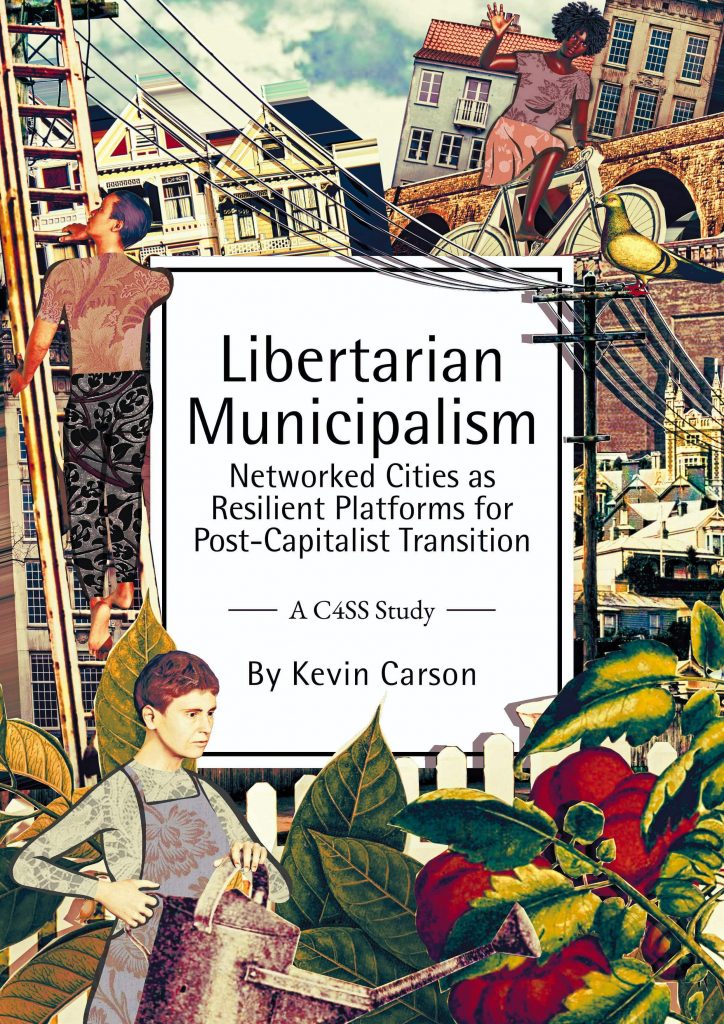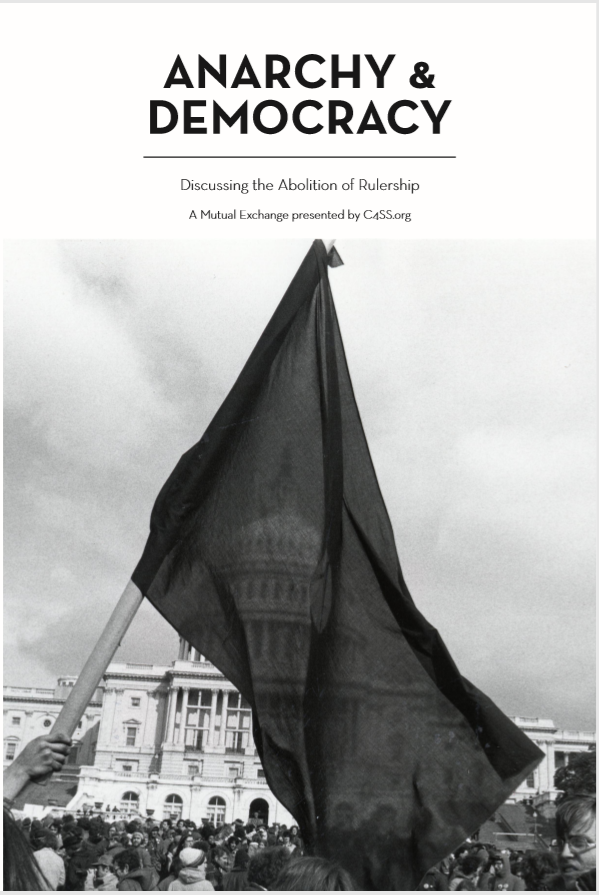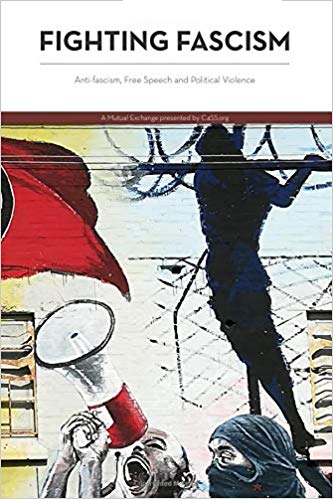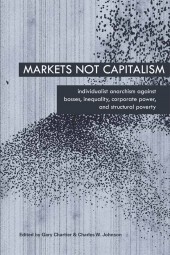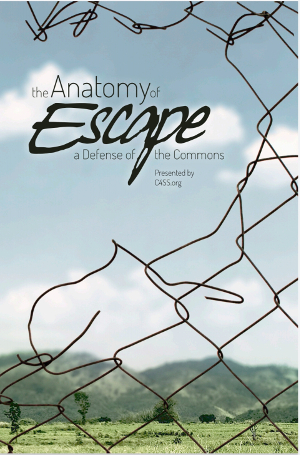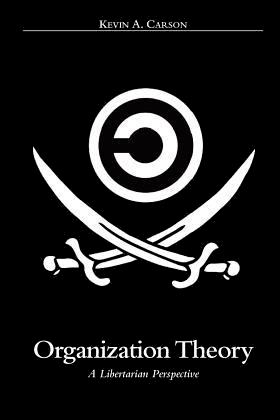Di James C. Wilson. Originale pubblicato il 9 gennaio 2018 con il titolo Rothbard’s “Left & Right”. Traduzione di Enrico Sanna.
Rothbard, Murray, ed. Left & Right: A Journal of Libertarian Thought. Auburn. Alabama Ludwig Von Mises Institute. 2007
Il periodo attorno alla metà degli anni Sessanta rappresenta un’epoca unica nella storia del movimento libertario e nel panorama mondiale. Il coinvolgimento americano in Vietnam si allarga, la Guerra Fredda è al culmine, e il movimento per i diritti civili ha appena ottenuto la sua più grande vittoria legislativa. La destra politica, dominata dalla paranoia stile National Review, è sempre più interventista. I due poli della politica americana sono uniti dal corporativismo in patria e dal militarismo all’estero.
In questo milieu che l’influente autore nonché attivista libertario Murray Rothbard (che quasi sicuramente non ha bisogno di introduzioni in questo sito) si disamora della destra e manifesta chiare simpatie per la Nuova Sinistra. L’evoluzione è testimoniata da Left & Right: Journal of Libertarian Thought, pubblicata dallo stesso Rothbard in diversi volumi tra il 1965 e il 1968. L’intera raccolta è scaricabile gratis qui. In questi saggi, Rothbard e i suoi collaboratori mostrano la loro adesione alle idee di Students for a Democratic Society, il Black Power Movement, l’American Indian Movement e l’Anti-War Movement (fortemente contrario alla leva obbligatoria). L’intento degli autori è di sintetizzare il loro libertarismo con la sinistra antiistituzionale.
Questo è il punto di massimo avvicinamento tra Rothbard e il libertarismo di sinistra, cosa che fa di Left & Right una delle letture preferite della sinistra libertaria. L’opera appare stimolante, soprattutto in un momento in cui molti libertari si lasciano sedurre dal nazionalismo di Trump, dalla politica identitaria bianca e dal razzismo mascherato. Rothbard fa sue le idee degli studenti culturalmente progressisti del suo tempo, così in contrasto con le sue opere più tarde, più reazionarie, e con gran parte del libertarismo convenzionale. A ben vedere, però, c’è un fondo oscuro, spinoso, che fa presagire la sua futura svolta reazionaria. È un aspetto negativo che cercherò di evidenziare.
Leggere le 700 pagine della raccolta significa cavalcare liberamente tra una moltitudine di argomenti. Circa metà dei saggi è opera di Rothbard, il resto dei suoi collaboratori. Se un saggio non interessa, si può passare ad un altro di argomento completamente diverso.
Sorprendentemente, l’opera non è accademica. Chi vuole saggi astrusi di teoria economica dovrebbe cercare altrove. La raccolta è per chi vuole articoli d’opinione su tutto, dalla leva alla licenza di pesca. Gran parte dei saggi ha la lunghezza di un articolo di fondo, solo qualcuno va oltre. A dilungarsi è soprattutto Rothbard, che riesce però interessante fino alla fine. È il caso del saggio di apertura, Left and Right the Prospects for Liberty, che fa la storia del pensiero libertario in maniera molto più approfondita di quanto i paragrafi d’apertura facciano presupporre.
Rothbard spiega perché la tradizionale contrapposizione destra-sinistra non ha più valore, e interpreta il concetto di libertà che prende da entrambe le parti dello spettro politico. Indica in quei conservatori che hanno lottato per tenere in vita le monarchie, le teocrazie e le aristocrazie terriere del passato, i nemici tradizionali della libertà. È grazie al collasso di questi vecchi ordinamenti, spiega, che il popolo ha potuto liberarsi e migliorare le proprie condizioni di vita.
Perciò, conclude, il liberalismo classico è l’opposto del conservatorismo. Altrove critica specificamente ai conservatori suoi contemporanei l’amore per il militarismo, l’imperialismo e la violenza poliziesca contro i neri. Basta una citazione:
Il conservatorismo è il cadavere insepolto dell’ancien régime preindustriale, non ha futuro. Il Revival Conservatore, la sua attuale reincarnazione americana, si dibatte tra gli spasmi mortali di un’America fondamentalista, rurale, provinciale, bianca e anglosassone.
Parla poi del socialismo di stato (e il progressismo) come di un confuso ibrido filosofico che vorrebbe propositi egalitari e liberali rimanendo aggrappato a strumenti autoritari conservatori. Sono ideologie che risentono della contraddizione tra fini e mezzi. Mentre elogia la Rivoluzione Industriale, però, Rothbard glissa sul fatto che lo stato costrinse la popolazione rurale a lavorare nelle fabbriche. Altrove l’analisi della genesi della classe lavoratrice industriale è più approfondita.
Uno dei saggi più lunghi, scritto da Harry Elmer Barnes, parla dell’attacco di Pearl Harbor e dell’amministrazione di Franklin Delano Roosevelt, di come quest’ultima sapesse dell’attacco con largo anticipo e avesse lasciato che accadesse. All’amministrazione, dice Barnes, serviva un attacco giapponese a sorpresa, per smuovere l’opinione pubblica dall’isolazionismo e per alimentare il sostegno all’ingresso americano nella Seconda Guerra Mondiale.
Gli Stati Uniti, continua Barnes, già dai primi di dicembre 1941 erano in grado di decriptare le comunicazioni giapponesi (sistema chiamato “Purple” dallo spionaggio americano); in molti messaggi era chiaro che si stava preparando un attacco a sorpresa a Pearl Harbor per il sette. I numerosi tentativi di avvertire gli ufficiali al comando nelle Hawaii, il generale Walter E. Short e l’ammiraglio Husband E. Kimmel, furono bloccati da persone vicine a Roosevelt, soprattutto il generale George C. Marshall (capo di gabinetto delle forze armate) e il generale Carter W. Clarke. Marshall, Clarke e Roosevelt sono, per Barnes, i veri criminali, mentre Short e Kimmel sono i capri espiatori ingiustamente accusati.
Quando ci fu l’attacco, aggiunge l’autore, Roosevelt aveva già deciso con Olanda e Gran Bretagna di contrastare l’avanzamento giapponese in Asia sudorientale. L’amministrazione esasperò le tensioni rifiutando anche un accordo di pace proposto dal Giappone.
Nei messaggi segreti tra Roosevelt e Churchill, si vede la volontà del primo di entrare in guerra in Europa; l’attacco giapponese, in assenza di attacchi da parte di Germania e Italia, era una comoda scusa. Le teorie di Barnes sono interessanti, anche se pochi lettori hanno le risorse storiografiche necessarie a valutarle.
È una sfortuna, visto che si tratta di cose che richiederebbero un certo scetticismo colto. L’isolazionismo di Barnes lo porta a sottovalutare, se non negare, i crimini dei regimi nemici degli Stati Uniti. Non parla delle atrocità commesse dall’impero giapponese in Cina prima di Pearl Harbor. Peggio ancora, Barnes era tra i primi negazionisti dell’olocausto e dell’antisemitismo che stava dietro, opinione che manteneva al momento di contribuire all’opera. Il fatto che Rothbard dovesse saperlo quando gli chiese di contribuire, aggiunse una macchia alla sua reputazione.
Prevedibilmente, gran parte dell’opera parla del coinvolgimento americano in Vietnam e del conseguente movimento antimilitarista. Diversi saggi parlano di David Mitchell, giovane attivista contrario alla leva condannato e poi assolto. Uno di questi saggi è stato tra i primi a denunciare la pratica americana di mettere a ferro e fuoco i villaggi vietnamiti, bruciando le scorte di cibo, torturando, e più in generale commettevano crimini contro l’umanità.
Le critiche si estendono anche al crescente complesso industriale militare, prendendo di mira soprattutto la General Dynamics. Anche il sistema universitario è criticato perché tende a favorire studi che alimentano le industrie belliche. Tra gli accusati il presidente dell’università della California Clark Kerr. L’allora governatore Ronald Reagan viene elogiato per aver licenziato Kerr, anche se si sa che Reagan fece la cosa giusta per ragioni sbagliate: perché Kerr appariva debole contro gli estremisti di sinistra presenti nel campus.
Grande spazio è dedicato alla distinzione tra la vecchia sinistra dell’establishment democratico e la nuova sinistra antiautoritaria. Le critiche di Rothbard contro la vecchia sinistra, accusata di voler ridurre le masse a spettatori passivi, ricordano Chomsky. Rothbard elogia la nuova sinistra perché, oltre a voler controllare le istituzioni, cercava di creare alternative parallele. L’uso della disobbedienza civile, dice, trasformò la nuova sinistra in un “movimento di eroi”.
La destra di allora è invece dipinta come un branco di disperati. Rothbard nutre una forte antipatia per William Buckley Jr. e la redazione della National Review, favorevoli all’intervento armato all’estero e all’oppressione poliziesca in patria. National Review è derisa per la sua voglia di purgare il movimento conservatore degli elementi imbarazzanti, come la John Birch Society (invisa a molti conservatori per le sue paranoie complottiste anticomuniste). Spiega Rothbard che i “Bircher” creavano imbarazzo, ma solo perché portavano lo stile della National Review alle estreme conseguenze.
Non possono mancare due parole sullo stile retorico. Rothbard è bravo a guidare l’attenzione del lettore sul soggetto, ma spesso in modo enfatico, se non presuntuoso. Usa spesso termini come “glorioso” per indicare qualcosa che incontra il suo favore. Quando, ad esempio, scrive un sentito elogio funebre al suo mentore Frank Chodorov, guasta l’atmosfera paragonando l’interruzione di una delle pubblicazioni di Chodorov alla morte di un “carissimo” amico di famiglia, senza accorgersi dell’esagerazione.
In apertura del primo volume Rothbard scrive: “Una nuova rivista d’opinione deve giustificare la sua esistenza, che nel nostro caso è dedicata alla libertà dell’uomo.” Certo è lodevole che ci si dedichi alla libertà, ma viene da chiedersi perché mai una rivista debba giustificare la propria esistenza. E se non lo fa?
Oltre ad usare un linguaggio fiorito, Rothbard tende a scrivere come se chi legge stia automaticamente dalla sua parte. Ma i suoi pezzi si alternano a quelli di altri autori, e il divertimento supera la noia. Talvolta la cosa va a suo vantaggio, soprattutto quando attacca. Come nella feroce recensione del libro “Moulding the Communists”, scritto dal collaboratore della National Review Frank S. Meyer.
Meyer, ex tesserato del Partito Comunista, parla della tendenza degli iscritti a fraternizzare con persone con gli stessi ideali, fare amicizia con altri iscritti, e sviluppare un certo conformismo di pensiero e una particolare dedizione alla causa. Per Rothbard, si tratta di atteggiamenti che non sono esclusivi dei comunisti, ma propri di ogni “organizzatore” dedicato ad una causa, che sia un dipendente della General Motors o, orrore, un collaboratore della National Review. Qui il senso di superiorità di Rothbard riesce simpatico.
L’opinione che traspare sul comunismo internazionale è generalmente interessante. Rothbard e gli altri ci vedono un’ideologia sbagliata, ma non un pericolo immanente per la libertà negli Stati Uniti. Piuttosto sono il militarismo e le guerre che pretendono di combattere o contenere il comunismo a livello internazionale a costituire una minaccia in sé per la libertà e la sicurezza, mentre il tentativo dello stato di schiacciare l’attivismo comunista in patria non è che una violazione della libertà personale. Per giunta, aggiungono gli autori, la rabbia anticomunista è stata usata per espandere enormemente lo stato.
Secondo Leonard P. Liggio, altro collaboratore prolifico, molti movimenti comunisti del ventesimo secolo sono sorti per combattere certi tribalismi autoritari, residui feudali, la schiavitù, sulla linea dei movimenti liberali dei secoli precedenti. Liggio vede in questi movimenti aspetti anticoloniali e antiimperiali sostanzialmente positivi.
Molte parti sono invecchiate male, e ciò non sorprende. Colpisce soprattutto la presenza di un negazionista. Il fatto che i suoi scritti siano preceduti da una raggiante introduzione commemorativa di Rothbard (Barnes morì poco dopo) peggiora la cosa. Rothbard descrive Barnes “un maestro e un amico”. E poi: “[era] allegro, gentile, un intrattenitore arguto e spesso irriverente, un compagno meraviglioso e simpatico.” Rothbard non cita esplicitamente la sua negazione dell’olocausto, ma elogia il suo revisionismo sulla Seconda Guerra Mondiale e quelle opere in cui il negazionismo è più evidente.
Il fatto che Rothbard, ebreo lui stesso, elogi e dia spazio ad una persona del genere, è indice di una radicata preferenza ideologica a scapito della verità, una scelta che peserà sulle sue opere per decenni. Il fatto che il Mises Institute abbia ripubblicato l’opera sul proprio sito la dice lunga anche sull’istituto.
Molti i termini datati, come “negro” e “Jap” (giapponese, ndt). Il primo era in un certo senso normale a quei tempi, e fa capire quanto siano cambiati i tempi. Il secondo era ed è un insulto. Anche nei saggi apparentemente più progressisti si possono notare derive problematiche.
Il commento intitolato “A Cry for Power Black, White, and Polish” (La Voglia di Potere di Neri, Bianchi e Polacchi, ndt), vede con favore una sorta di nazionalismo nero, immagina una secessione delle aree a maggioranza nera e la nascita di unità autonome. Secondo l’autore, questa forma di nazionalismo mira a liberare gli oppressi dalle mani degli oppressori, il che sarebbe positivo; un movimento nero che si batte per queste cose è un bene.
L’autore vede di buon occhio anche un “potere bianco”, rappresentativo degli emarginati bianchi. Idem per il “potere polacco”. L’autore sembra preferire la separazione all’integrazione con la società “bianca”, probabilmente sulla base dell’assunto, debole e non dimostrato, secondo cui i neri non vogliono o non riescono ad integrarsi con il resto della società. Se sono criticabili i liberal di allora, che volevano usare lo stato per costringere la popolazione ad integrarsi, altrettanto criticabile è la posizione opposta.
Poche parole, come era da immaginarsi, sugli orrori dei regimi comunisti. Allo stesso modo, Barnes glissa sui crimini dell’impero giapponese e nega l’olocausto.
Completano l’opera alcune riedizioni di classici libertari scritti da persone come Herbert Spencer (sui mali dell’imperialismo) e Lysander Spooner (sul significato della legge naturale). Tutto ciò è in linea con l’atmosfera politica postbellica del tempo.
La varietà degli argomenti e dei particolari è enorme e non è possibile riassumere tutto in una recensione di lunghezza ragionevole. Libertari di ogni risma possono trovarci un gran numero di cose condivisibili e un gran numero di cose non condivisibili, ma anche cose che non sono condivise da nessuno. La raccolta riflette il pensiero di quei tempi, compresi alcuni presupposti problematici, ma dà un’idea di come ideali libertari e di sinistra potrebbero un domani convergere.



